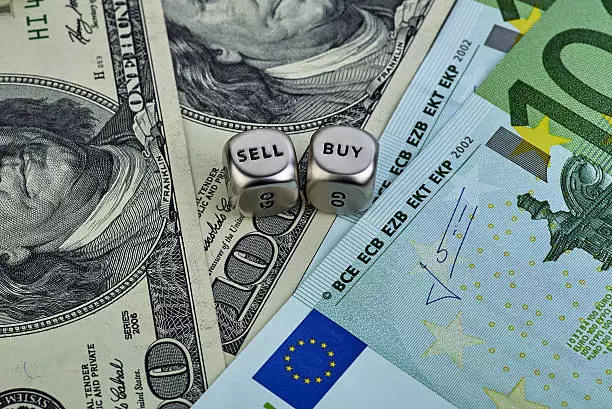In the fast-evolving landscape of currency markets, the euro has once again demonstrated its formidable resilience, rising sharply against the US dollar in 2025. After bottoming out near 1.1392 in August, the euro’s relentless upward momentum culminated in breaking past the 52-week high of 1.1830, recorded in July. This surge is more than mere market volatility; it signifies a shift in the fundamental forces that have historically favored the dollar. Analyzing this pattern reveals a narrative of strategic positioning, driven by macroeconomic developments and central bank cues that cast doubt on the dollar’s dominance.
This rally, peaking at a four-year high of 1.1919 in September, is emblematic of a broader market recalibration. Investors are recalibrating their expectations in light of the Federal Reserve’s recent policies, which are perceived as less aggressive than before, and signs of waning US economic momentum. The euro’s ascendancy suggests that market participants perceive the US dollar as losing its safe-haven appeal, especially amid the anticipation of future rate cuts and economic moderation.
The Federal Reserve’s Dovish Messaging: A Double-Edged Sword
The Federal Reserve’s decision to cut interest rates by 25 basis points in September, along with the subsequent narrative, has played a pivotal role in shaping currency dynamics. Initially, the Fed’s move was perceived as dovish, designed to support growth amid external uncertainties. The release of the dot plot, indicating potentially two more rate cuts before year-end, fueled expectations of a prolonged easing cycle. Yet, the language used by Fed Chair Powell introduced a nuanced perspective that muddled these expectations.
Powell’s emphasis on a “risk management” approach, combined with a commitment to proceeding “meeting by meeting,” tempered enthusiasm for an aggressive easing cycle. This stance implied that the market’s anticipation of deeper cuts had been overstretched, leading to a correction in the USD’s strength. Consequently, the dollar’s decline intensified in the Asian session, with the EUR/USD dipping to approximately 1.1780, showcasing the market’s sensitivity to Fed rhetoric. The divergence between market expectations and the Fed’s cautious tone underscores a critical insight: monetary policy signals, especially when nuanced, can swiftly alter currency trajectories.
The persistent expectation—reflected in the futures market—that rates will decline further by at least three additional 25 basis point cuts in 2025 amplifies the dollar’s vulnerability. This speculative positioning creates a feedback loop: diminishing rate differentials diminish dollar attractiveness and bolster the euro’s relative strength. If the Fed continues on this dovish path, the euro’s rally could gain further momentum, challenging its previous resistance levels.
Technical and Macro Indicators: Probing the Short-Term Outlook
On the technical front, the EUR/USD’s recent decline from its peak appears to be a healthy correction within an ongoing minor uptrend. The key short-term support zone lies between 1.1770 and 1.1790. Technical patterns such as bullish reversal candlesticks and a breakout in RSI above oversold levels support a tentative bullish revival. The intraday momentum suggests that the euro could revisit higher resistance levels around 1.1860, with critical obstacles at 1.1900 and 1.1970.
Meanwhile, the widening yield spread between German Bunds and US Treasuries underscores the shifting fundamentals. The narrowing of the spread from -1.63% to -1.54% indicates diminishing US bond relative attractiveness, tilting investor preference toward eurozone assets. Such shifts weaken the dollar further, reinforcing the euro’s gains.
However, a break below 1.1770 could nullify the bullish outlook, exposing support levels around 1.1700 and 1.1675—areas that coincide with the 20-day and 50-day moving averages. If these supports give way, the current rally’s momentum could be challenged, leading to a deeper correction or consolidation phase.
Implications of Market Sentiment and Policy Divergence
The divergence in monetary policy outlooks between the Federal Reserve and the European Central Bank (ECB) amplifies the euro’s potential for continued strength. While the Fed signals a cautious slowdown, the ECB maintains a relatively more dovish stance, supporting the euro’s bid for higher levels. As market participants digest these policies, their expectations for future rate movements become crucial drivers.
Furthermore, geopolitical uncertainties and global economic headwinds remain active catalysts for currency shifts. The strong euro may evoke concerns within the US about losing competitiveness and shifting investment flows. Equity markets and bond yields will remain sensitive to this evolving currency landscape, influencing broader financial conditions.
Ultimately, the euro’s recent ascent is a testament to the complex interplay of macroeconomic data, monetary policy expectations, and market sentiment. While technical signals provide a short-term roadmap, the overarching trend hinges on future central bank actions and economic resilience. If the dollar sustains its decline amid dovish sentiment, the euro could fundamentally redefine its position as a formidable force in the currency arena.

